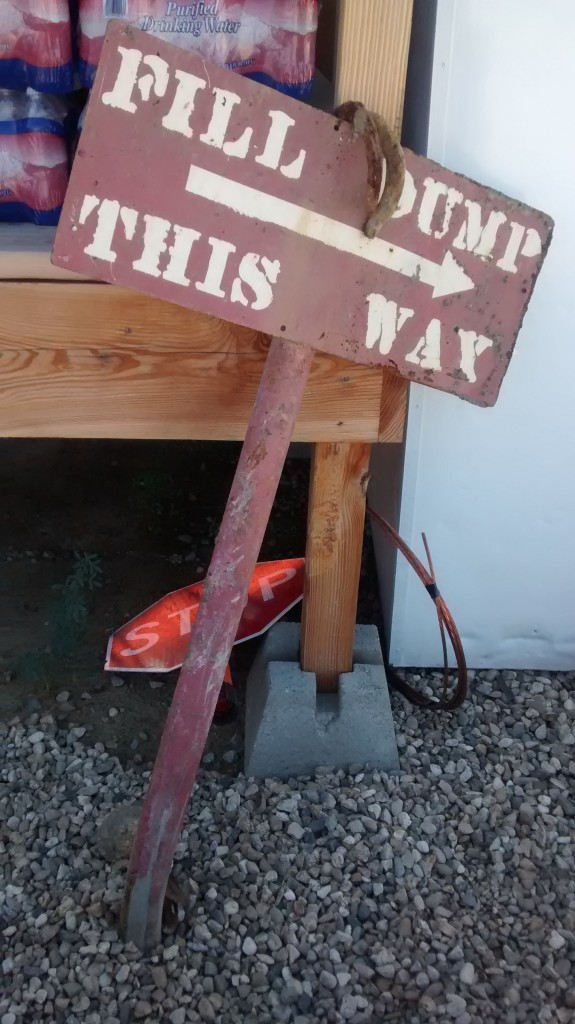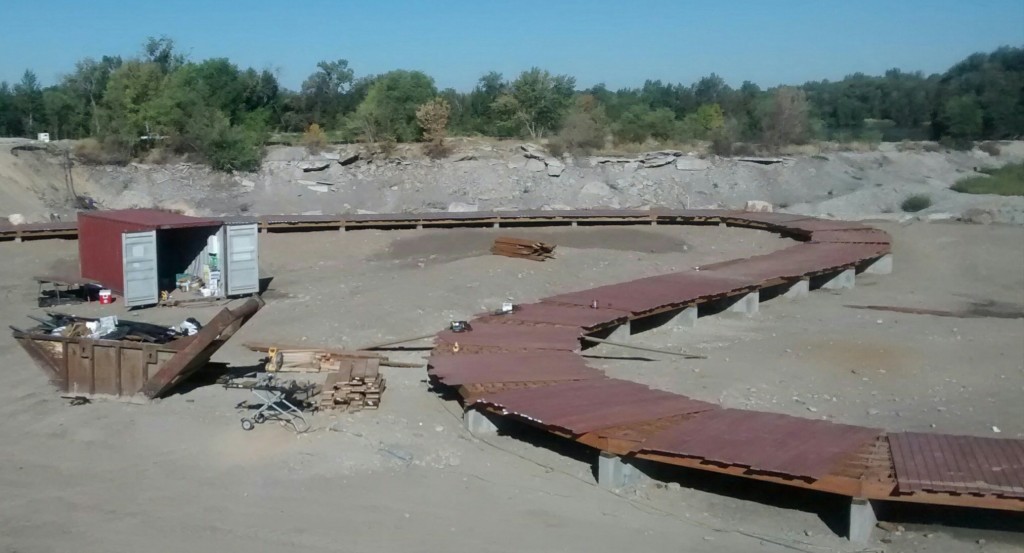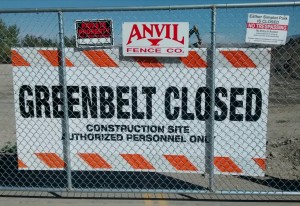by Rae Brooks, VPNA board member
BOISE’S WEST END – Here’s what we all want to know: Esther Simplot Park will probably not open until late summer next year. And access to the Greenbelt from the western end of Pleasanton Avenue will likely also remain closed until the park opens.
Here’s why: The city of Boise’s original plan was to complete the 55-acre park on the east side of the Boise River by late spring 2016. But earlier this year, while digging the new park’s largest pond, workers discovered industrial waste, setting construction back about two months while armies of trucks carried off petroleum-laced soil and other debris.
The discovery meant that planting of the park landscape will likely be delayed until early spring, even though park builders McMillen Jacobs Associates are trying to make up lost time. The city originally planned for planting to be completed this fall. The plants will need several weeks, if not months, to establish themselves before the onslaught of visitors. So a spring planting means the park likely won’t officially open until late summer.
Landscape architect Wendy Larimore, the city’s park development coordinator, knows there will be tremendous pressure to open the new park before the plants are fully established. And, she asks, how do you keep people out?
“It’s really hard to look at a park that looks ready, and you still have it fenced off,” she said.
The city would like to provide access to the Greenbelt from Pleasanton before the new park opens, but its design makes that difficult. The paved path that ran along the northern shore of Quinn’s Pond to the Greenbelt has been removed. It will be replaced by a curved road with a sidewalk that would be difficult to close off from the rest of the park.
The city did test the soil on the site before construction began on Feb. 23, but the contaminated fill showed up at 15 feet, just below its deepest tests. The discovery put the park’s design at risk; removing the contaminated soil would cost millions of dollars.
“It was kind of touch and go,” said Larimore, who visits the site every day. “We thought we might have to do some redesign.”
 But the city came up with $4 million for the cleanup, while the Simplot family foundation, which was already footing the entire construction bill for the park, added another $1.5 million. Since the spring, more than 100,000 cubic yards of contaminated fill and debris have been removed from the site, apparently once used as an industrial landfill.
But the city came up with $4 million for the cleanup, while the Simplot family foundation, which was already footing the entire construction bill for the park, added another $1.5 million. Since the spring, more than 100,000 cubic yards of contaminated fill and debris have been removed from the site, apparently once used as an industrial landfill.
That’s more than 5,000 truckloads. And that’s why anyone who has been keeping an eye on the fenced-off site has seen constantly shifting mountains of dirt, as the contaminated fill was dug out and piled up for loading onto trucks.
Now, finally, features of the long-anticipated park, which the Simplots wanted to harken back to an old-fashioned swimming hole, are finally taking shape.
A fishing dock for the new Esther’s Pond, twice the size of Quinn’s Pond, has been completed. Friendship Island — a new island in Esther’s Pond — is also finished. Construction of a bridge to the island is underway and a boardwalk along the pond’s east side is nearly done. Excavation of a meandering channel to connect the two ponds is also close to completion. Work has started on the park’s irrigation system, and Quinn’s Pond has been extended from its northern shore in preparation for a sandy beach. Early work has started on a playground.
Larimore estimates that 20 percent of the park has been completed. Restrooms and shelters will be built over the winter. The paved road will be added in the spring. For Larimore, that’s a luxurious way to build a park.
“Usually,” she says, “we just start out with turf and trees. You add restrooms and shelters as the money becomes available — and it might take 20 years.”
So stay patient. The city’s master plan for the site originally called for eight soccer fields. Yes, those might have already been finished. But put up with the inconvenience awhile longer and Boise’s west end neighborhood will end up with a unique multi-million-dollar turnkey park, likely destined to become one of the area’s defining features.


